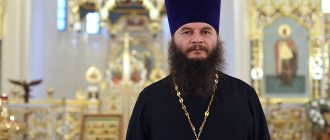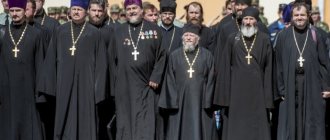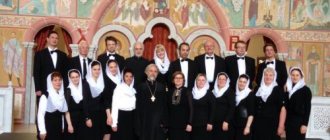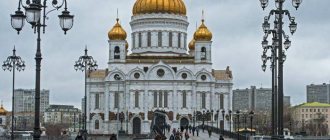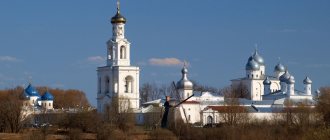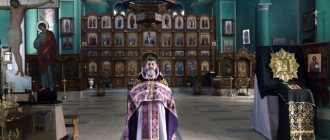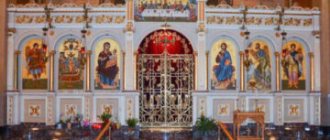In May 2022, Patriarch Kirill stated that the Russian Orthodox Church builds an average of 3 churches every 24 hours,1 which gave rise to jokes that the Russian Orthodox Church is the most profitable and growing franchise in Russia. Where does a religious organization in a secular state get the money to build such a large number of gilded and other domes? Moreover, there is reason to believe that the Church does not reinvest the majority of its income.
According to Nikolai Mitrokhin, candidate of historical sciences, information and research employee, in 2001 the total annual income of church structures amounted to about 500 million dollars, which at that time “could feed a dozen subsidized regions for a year”2, not counting donations, whose volume Mitrokhin estimated at no less than 200-300 million annually. For comparison, one of the largest US corporations, the automobile giant General Motors (which at that time had been the largest automaker in the world for about 70 years), recorded a net profit of $601 million in 20013.
Donations
One of the most obvious sources of income is donations. Most of them are not coins at all, which the congregation throws into a box with the inscription “for repairs of the temple” (or during church services). Cult ministers individually work with very rich and, presumably, very sinful people (leaders of organized crime, corrupt businessmen and officials, law enforcement officers, and so on). Here the prospects are much more significant - news regularly appears like “in the Oryol region a priest was given an SUV for 6 million rubles”4 or even “in Volgograd a pensioner transferred an apartment to a priest after confession”5. Boris Berezovsky admitted in an interview with the Dozhd TV channel that he financed the Orthodox newspaper of Alexei Vishnyak,6 who later accused him of organizing the scandalous action of the Pussy Riot group.
There is also the Russian Club of Orthodox Patrons of the Arts, which positions itself as “an elite club uniting representatives of various business sectors”8. The following sources of funding are indicated on the website of this organization: membership fees; deductions from the businesses of club members; income from business processes organized by the club on the basis of the charter9. The social composition of the Church’s patrons is wide and includes not only entrepreneurs: many bandits and crime bosses are believers, some even have personal priests10.
In iconography there is such a plot - “Unexpected Joy” - depicting a criminal begging the icon for forgiveness. He is very popular among “thieves in law” and “brothers” from the 90s
However, not all the money collected for the construction or repair of churches goes to these purposes. The most famous story is the construction of a temple on the site of the murder of Nicholas II and his family, when emeralds alone were stolen for 165 million rubles (29 kilograms)11.
Why does the Church take money for everything?
Parishioners give money to the temple because sometimes it is the only thing they can give in return. The temple and the priest do not require anything in return, but it is a natural impulse of the soul to somehow give thanks.
In return for what? Give thanks for what?
For almost everyone who comes to church - for a service or just drops by during the day - these are intimate moments. Someone experiences sincere joy from prayer, which they feel especially deeply in church near the icons. Some are grieving, others are praying for health. Someone hopes that this moment of concentration in the temple in front of the icon will help in the upcoming task. To give thanks is a natural impulse of the soul.
Some people thank them by helping a church or monastery - they do what they can. The rest - in money and donations (for example, in the form of buying candles), because for the temple the sale of candles or fees for submitting notes is a significant source of income that allows the household to not fall apart.
The lights are on in the temple - this is because 1000 candles were sold. The church is warm in winter because candles were sold and money was donated for notes. That's pretty much exactly what it is.
Candle trading
It was not in vain that Father Fedor from “12 Chairs” dreamed of opening his own “candle factory” - the sale of church candles is a business with one of the most favorable cost-to-income ratios. According to the Sobesednik newspaper, the cost of a three-gram candle ranges from 20 to 40 kopecks per piece, while in churches it is sold on average for 20-40 rubles12. The website xsvechi.com (Candle molds “Etalon”) lists different options for producing candles at a cost from 19 kopecks to 1.14 rubles per piece13. In the “Orthodox Word” store on Pyatnitskaya in December 2022, you could purchase a package of 5 candles for 890 rubles14.
In general, the cost of church candles is minimal, and the range of final prices is very wide. One former monastic novice from Kursk founded his own business, “Preobrazhensky Candle Brotherhood,” with revenue of 13 million rubles a year (according to 2016 data)15. The portal for selling ready-made businesses and franchises Altera-Invest estimates the return on production of church candles as “very high” - 5 out of 516.
Why does the Church need money?
The activities of the Church, like any spiritual community, take place in the world - in the society that has developed around it. There is money in the world with which people, companies and the state pay each other. Sometimes there are free services, but this only means that the state pays for the people in this case.
Nothing is free, and nothing can legally exist in the world without money. The exception is subsistence farming - the ideal way of life when a person or community feeds, clothes and heals itself - but even in this case, money is necessary: to pay, for example, a tax on the land that the community or house occupies. In fact, even the most “natural” communities use inexpensive tractors, household tools, and store-bought clothing on their farms. Medicines and some products are also taken from stores.
Economy of the Nikitsky Monastery in the Yaroslavl region.
Why does the Church need money? Money helps her survive. Each temple pays the state for light (hundreds of light bulbs in the temple) and heating. Money is spent on repairing and maintaining buildings in good condition. The temple buys candles and vestments for priests - according to a centuries-old tradition, it has developed that vestments of different colors are needed, and they all cost money. The temple pays salaries - to the priests and to those who work at the temple - for example, to a seller in a bookshop at the church.
Some churches host Sunday schools - and sometimes these are separate buildings that also have electricity and heating.
If this is a monastery, then expenses for food are added to the household expenses. Living by subsistence farming, especially if the monastery is located within the city, is now impossible.
Vysoko-Petrovsky Monastery, which is located in the very center of Moscow.
And some monasteries (more rarely, churches) try to have a small editorial office in which spiritual books are prepared for publication. For example, such a publishing house is located at the Holy Trinity Lavra of St. Sergius or at the Lavra Compound in Moscow. By selling these books, the monastery will earn something, but first the book must be prepared for printing, and this is also money.
And so on.
In fact, any church and any monastery, no matter how high the level of spiritual life and the degree of asceticism in it, needs money.
***
Church and money - history of the issue
The question of whether the Church needs any property or benefits is not new. The dispute over church property and land ownership has been known in Rus' since the 15th century. At that time, the Venerable Joseph of Volotsky defended the right of monasteries to property where the monastic peasants would work, and the Venerable Nil of Sorsky and his followers (“non-covetous”) taught that monks should feed themselves and avoid luxury in churches.
Of course, the position of the Monk Neil seems preferable, but then it will be difficult for the Church to engage in charity: helping the poor, building schools, organizing summer camps, pilgrimage trips, etc. - the monasteries will lose any opportunity to help the world except by praying for it.
The village of Selikhovo in the Tver region until the 19th century belonged to the Holy Trinity Sergius Lavra. The peasants provided the main monastery of the country with part of what was necessary, and the monastery gave the peasants a calm, peaceful existence and prayerful intercession.
Jewelry trade
Church shops are, among other things, alternative stores for jewelry (this industry is very capital-intensive, so religious leaders have always paid attention to it) - crosses, chains, rings, and so on. This is an extremely profitable trade, since the content of gold and silver in them can be minimized (unlike the price), and the exchange and return of goods is impossible and amounts to blasphemy.
As Moskovsky Komsomolets reported, many people complained to the police that they were sold counterfeit gold in the church17. Kommersant also wrote about counterfeits sold on the territory of churches and monasteries18.
How is the church hierarchy built?
To become a priest, you must receive theological education at a seminary. Previously, with long service in the church and a strong desire, such status could be given to a person from the outside. Now the rules have changed. Seminaries are now officially classified as state institutions of higher education. In fact, spiritual education is very different from secular education.
A seminary graduate can rarely get a standard job. He is faced with a choice: urgently get married and look for a place in the church, or remain single and become a monk. The first option is more familiar. After marriage, a seminarian can expect to be ordained to the priesthood (by undergoing ordination). He needs to write a petition to the bishop for further appointment as a priest. The second way is implemented less frequently, since leading such a lifestyle is quite difficult.
The church hierarchy includes clergy and clergy . The first ones only help to conduct services. The latter undergo ordination and have the right to perform the sacraments and can manage the parish. They are divided into deacons, priests and bishops. How many months, years or decades a seminarian will spend to become a priest depends only on his abilities and obedience.
Parishes appoint their own head. If there are a small number of parishioners, then the priest does the bulk of the work himself and with the help of his mother. If there are more people, they can hire candle makers, cleaners, and gatekeepers (they look after the temple). The priest will only come for services.
They can be fired for misconduct that causes reputational and public damage to the church. The culprit can first move to a parish in another locality, and then go on vacation without compensation. In case of serious violations, they may be fired altogether.
Trade in religious literature
At its retail outlets, the Church sells “ideologically correct” literature. There are practically no scientific works sold there; the shops sell journalism and propaganda literature. Basically, books sold in church shops advertise the ideology of the Church, and also contribute to the spread of myths from the legendarium of conservatives. A lot of books are sold about the “martyr” Nicholas II, about invented “miracles”, about the Bolsheviks - the servants of Satan and the national idea. These books are designed for a reader who will not read complex scientific works and analyze facts.
Parents who have read such “works” then believe that demons are forcing the child to use the computer, and they forbid him to play computer games, which leads to his becoming an outcast in the children’s group.
Other goods
Church shops have gone far beyond the traditional church assortment - they offer not only the usual “products”, but also a wide selection of audio and video cassettes with Orthodox themes, special clothing (from scarves and skirts for women to baptismal sets for babies), food (honey , Cahors, nutritional supplements, herbs), pottery and souvenirs, pilgrimage vouchers, small goods like leather wallets or T-shirts with Orthodox prints, and so on.
Widespread commercial use of icons - there can be options for any budget, from very cheap to very expensive icons on wood, using expensive paints and with gold frames decorated with precious stones and enamel.
Also in the second half of the 1990s, there was an increase in the production of food products (bread, water, honey, herbs, cheese, wine, tea) under the “church” brand. In almost every region you can find “church” or “monastery” water and honey on the shelves of grocery stores, and in large cities - church bakeries.
Industry
To replenish church shops, by now in Russia, and in other CIS countries, an extensive infrastructure has developed. It is based on factories producing church utensils and candles.
The most famous production is the Sofrino art and industrial enterprise. It produces icons, church furniture, tombs, bowls, wax and paraffin candles, providing these items, according to several RBC sources in the Patriarchate, to half of Russian churches. The product catalog can be viewed on the official website19; the range is extremely wide, and prices for some items reach up to 3.7 million rubles. In a conversation with RBC, priests admitted that in dioceses they are strongly advised to order Sofrino products for churches20.
As Nikolai Mitrokhin notes, “virtually every large diocese has its own factory, not formally associated with the church, since this primitive production does not require special investments, but brings stable and high profits. In addition to them, there are hundreds of workshops and thousands of amateur entrepreneurs who sew vestments to individual orders, paint icons and make iconostases, make bells, and so on”21.
Why don't priests give away donated cars?
Fine. If an expensive car is a gift, why not give it to someone who needs it?
On the one hand, yes. And there is a great example: the holy righteous John of Kronstadt, who lived just before the revolution. He was literally bombarded with money and gifts, but he knew how to use it all correctly: he had nothing left. But he was a saint, and in fact, that form of non-covetousness was one of the forms of miracles, the multitude of which he became famous for. You are given a thing, and you must get rid of it in such a way as not to upset or embarrass anyone.
Automobile. It's not entirely clear how to do this. You come to the temple and the priest says: I’m giving you a car? Or does he say: I know you don’t even have money for a domestic car, but I’ll give you an expensive one, which is even more expensive to maintain? Or: you, of course, don’t need the car, but I’ll give it to you anyway - if you don’t need it, sell it and earn some money?
Of course, if suddenly a church or monastery has an extra car, then of course they try to help those who do not have enough cars for their household needs: a neighboring monastery, a kindergarten, and so on. But the situation of an “extra car” is quite hypothetical, because cars, if they are given, are given to those churches that really urgently need them.
Here's an example.
One church was given an SUV as a gift - this was done by a rich man in gratitude that the priest, with his advice, directed this businessman to the Church path and helped save his family. He learned that the temple already has a car, but it does not fit vestments, lecterns and other utensils that are needed for frequent trips to prayer services. He could have given a UAZ, but this car often breaks down and is inconvenient - so he did not give such a car, but gave a foreign car.
So an SUV appeared in the temple, into which everything now fit perfectly and which had good reliability coupled with excellent driving characteristics. The deacon of the church often sat behind the wheel of this SUV. And from the outside it looked like “the priest drives an expensive car” and doesn’t give it to anyone.
Rituals (“requirements”)
Be born, be baptized, get married, die - give your ass money for everything
Russian proverb
Priests have the right to conduct special religious ceremonies. The range of such services is wide: baptism, wedding, funeral service, burial, consecration of housing and objects, prayer service, memorial service, and so on. According to Komsomolskaya Pravda, the cost, for example, of a wedding varies from 3 to 10 thousand rubles22. At the same time, the Church has long been using methods that are familiar to experienced sales managers - for example, if one of the spouses is not baptized, he first needs to be baptized (according to the Kreschenie.ru portal, in Moscow this will cost about 2-4 thousand rubles23). And this process involves an additional upsell - the purchase of a cross and clothes for the ceremony.
Government funding
The root of the already mentioned hatred of the Church towards the Bolsheviks lies not at all in the spiritual, but in the material plane. Before the October Revolution, the authorities of the Russian Empire financed the Church24, spending enormous amounts of money from the national budget on this; also the Church did not pay taxes. Thus, according to the budget for 1917, 65,262,114 rubles25 were intended for the Orthodox Church, which at that time (especially during the war) was an astronomical amount. After the Bolsheviks came to power, state funding for the Church completely ceased as a result of the Decree on the separation of church from state and school from church26, and this is precisely the reason for the struggle of its personnel with Soviet power.
If we talk about today’s times, then, according to RBC estimates, in 2012–2015, the Russian Orthodox Church and related structures received at least 14 billion rubles from the budget and from government organizations27.
The Church is ready to take not only money. Thus, according to the Federal Law of November 30, 2010 No. 327-FZ “On the transfer to religious organizations of property for religious purposes that is in state or municipal ownership,” according to RBC, the Russian Orthodox Church received from the state over 270 objects of property in 45 regions in just 4 years . The real estate area was indicated for only 45 objects - a total of about 55 thousand square meters28. However, this will always be insufficient - for example, in 2015, Metropolitan Barsanuphius demanded that St. Isaac’s Cathedral in St. Petersburg be given back to the Church29, and only the protests of the townspeople and wide publicity of the incident helped avoid such a decision30.
Laundering of money
Priests are talkative, but not clean at hand
Russian proverb
Since the Church is a non-profit institution, exempt from paying taxes, it turns into a kind of offshore zone. The church can also act as an intermediary in corrupt deals. This is done like this: the criminal donates money for a new temple, and then the clergyman, for part of this money, does with the whole amount the actions that are required of him. It is simply impossible to prove that this is criminal money. According to Vesti of Ukraine, more and more religious organizations are offering this type of service31. Also, for example, the Regnum news agency received a letter from Evgeny Smirnov, the guard of the St. Nicholas Church in Yakutsk, who asked to check the diocese for money laundering32.
By the way, this is one of the main reasons for the love of the modern Russian authorities for the Church: the nomenklatura is financially interested in the Russian Orthodox Church. And therefore she benefits from the opacity of the Church.
In addition, through cooperation with the Church, it turns out that the corrupt official is performing a charitable deed, which is an advantage compared to other methods of money laundering. Another advantage of this scheme is the opportunity to make the necessary connections, since many security forces, crime bosses and officials choose spiritual mentors who allow them to communicate with representatives of such circles. I think this is precisely the reason for the baptism of such people as, for example, Boris Berezovsky.
The Russian Orthodox Church is good at hiding this part of its activities, but some religious organizations do not even try to hide it (screenshot from vedavat.com.ua)
Renting out buildings
News often appears like “The Church is taking away from VNIRO a building with unique laboratories for the sake of building a temple”33 or “The Russian Orthodox Church has seized land from a children’s rehabilitation center”34 - the Russian Orthodox Church in general very often seizes buildings or land. For what purpose? As Nikolai Mitrokhin notes, “in recent years, such a type of church business as renting out excess, including recently returned, premises has become particularly widespread”35. Real estate, like jewelry, is a very capital-intensive area, which automatically puts it in the circle of interests of religious organizations.
The Russian Orthodox Church has been fighting for many years to “squeeze” the building of the Historical and Archival Institute of the Russian State University for the Humanities on Nikolskaya Street
The church sometimes rents out some of the premises in church buildings. According to Vedomosti, in the Cathedral of Christ the Savior “you can rent temple premises for corporate events: the hall of church cathedrals - 450,000 rubles. per day, conference room – 100,000 rubles.”36. There is a lot of information on the Internet about the Danilovsky hotel complex, which brings considerable income to the Russian Orthodox Church.
Is it possible to take candles from the temple for free?
If you come to the temple, you will see that there are “prices” for everything. Candles: from 20 rubles and more. Notes. Order a prayer service. Wedding. And so on. Is this a store, you ask? This is a donation, they will answer you, and this is true.
No one will make a fuss if you take a free candle and leave. If you don’t have money - you are a poor old woman or a dying homeless person - they will give you a candle or a note for free. We have seen this ourselves many times. Some more or less prosperous churches or monasteries generally have the practice of distributing candles for free - for example, we saw this in the Conception Monastery in Moscow. Yes, a lot, where we saw it.
Cathedral of the Conception Monastery in Moscow. Ostozhenka street. Metro Park-Kultury or Kropotkinskaya
We also know that a priest can perform weddings and baptisms completely free of charge if he sees that a family who is having a very hard time with money asks for it.
Generally speaking, the priest conducts all prayer services and Sacraments absolutely free of charge. And handing over money is a natural impulse of a person’s soul. For example, a priest came to bless our house. His salary is less than ours, he has three children - I want to thank him.
Giving to the Church in any form is an established and natural state of affairs, which is lived completely sincerely and without any “thought” by “both parties.”
There are a huge number of examples where churches and monasteries (almost all churches and monasteries) whenever possible help hospitals, prisoners, the needy - as best they can and in whatever way they can. However, they do not advertise this, do not write on social networks and no one knows about it.
But those who do not go to church and do not take part in Church life are not familiar with this and say from the outside that “the Church takes money and does not want to do anything for free.”

